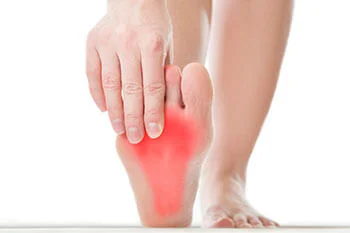Table of Contents
Introduction
The cuboid bone is located on the outside of the foot, and cuboid syndrome can develop if this bone becomes injured or displaced. People who have suffered an ankle sprain may get cuboid syndrome, in addition to athletes who are involved in tennis or basketball. The quick stop and go of the foot while participating in these types of activities may cause the cuboid bone to shift. Cuboid syndrome may also affect ballet dancers who have poor alignment, possibly causing pressure on the foot. Common symptoms that many patients experience can include severe pain, and their gait, or walking pattern may be altered. Treatment can include wearing a specific type of orthotic and performing certain exercises several times throughout the day. Additionally, cuboid syndrome may be treated by manipulating the cuboid bone back into place. If you have foot pain, it is strongly suggested that you consult with a podiatrist who can accurately diagnose and treat cuboid syndrome.
Cuboid syndrome, also known as cuboid subluxation, occurs when the joints and ligaments near the cuboid bone in the foot become torn. If you have cuboid syndrome, contact one of our podiatrists of Integrative Foot & Ankle Centers of Washington. Our doctors can provide the care you need to keep you pain-free and on your feet.
Cuboid syndrome is a common cause of lateral foot pain, which is pain on the outside of the foot. The condition may happen suddenly due to an ankle sprain, or it may develop slowly overtime from repetitive tension through the bone and surrounding structures.
Causes
The most common causes of cuboid syndrome include:
- Injury – The most common cause of this ailment is an ankle sprain.
- Repetitive Strain – Tension placed through the peroneus longus muscle from repetitive activities such as jumping and running may cause excessive traction on the bone causing it to sublux.
- Altered Foot Biomechanics – Most people suffering from cuboid subluxation have flat feet.


